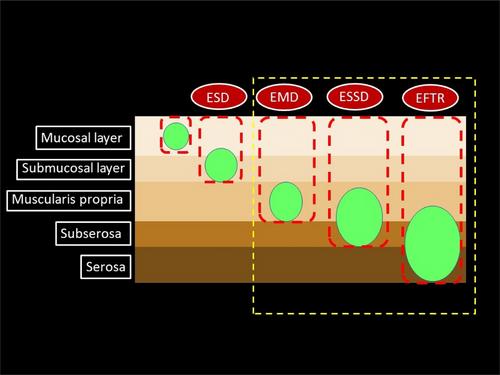Endoscopic resection for gastric submucosal tumors: A single-center experience in Japan
Abstract
Objectives
Endoscopic resection (ER) for gastric submucosal tumors (SMTs) has gained prominence in recent years, with studies emerging from various countries. However, there is a paucity of reports from Japan. We aimed to elucidate the efficacy and safety of ER for gastric SMT in Japan.
Methods
In this retrospective observational study, we investigated the outcomes of consecutive patients who underwent ER for gastric SMT from January 2017 to May 2023. The outcome variables assessed included the complete resection rate, procedure time, closure-related outcomes, and the incidence of adverse events.
Results
A total of 13 patients were included in the analysis. The median procedure time was 163 (55–283) min. Complete full-thickness resection was performed in seven cases, while in four cases, the serosa remained, and in two cases, the outer layer of the muscularis propria remained. In two cases where the SMT was located on the anterior side, conversion to laparoscopic surgery became necessary, resulting in a procedural success rate of 84.6% (11/13). Excluding these two cases, endoscopic closure of the defect was successfully accomplished in the remaining 11 cases. R0 resection was achieved in 12 out of 13 cases (92.3%). Although one patient had peritonitis, which was successfully treated conservatively, no other treatment-related adverse events were encountered.
Conclusions
Although ER for SMT on the anterior side may be challenging, our experience revealed that ER is a safe and efficacious approach for gastric SMT.


 求助内容:
求助内容: 应助结果提醒方式:
应助结果提醒方式:


